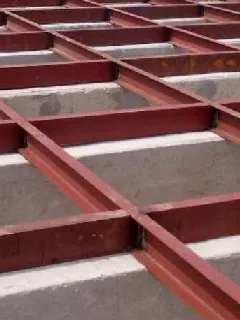loading...
- No. 9, Xingyuan South Street, Dongwaihuan Road, Zaoqiang County, Hengshui, Hebei, China
- admin@zjcomposites.com
- +86 15097380338
- Welcome to visit our website!
glass reinforced plastic structure
Understanding Glass Reinforced Plastic Structures
Glass reinforced plastic (GRP), also known as fiberglass, has become a pivotal material in various industries due to its lightweight nature, high strength, and resistance to corrosion. GRP is composed of a polymer matrix reinforced with glass fibers, which significantly enhances its mechanical properties. Over the past few decades, the demand for GRP structures has surged, driven by technological advancements and the need for sustainable materials.
One of the most notable characteristics of GRP is its lightweight yet robust nature. Compared to traditional materials such as metal and concrete, GRP structures exhibit a remarkable strength-to-weight ratio. This quality is particularly beneficial in applications where weight restrictions are paramount, such as in automotive, aerospace, and marine industries. For example, the use of GRP in boat manufacturing not only reduces the overall weight but also enhances fuel efficiency and speed.
Understanding Glass Reinforced Plastic Structures
The versatility of GRP allows it to be molded into various shapes and sizes, offering designers significant flexibility. This adaptability enables the engineering of complex geometries that would be challenging or impossible to achieve with conventional materials. From intricate roofing designs to custom ventilation ducts, GRP can be tailored to meet specific design requirements, making it a favorite among architects and engineers.
glass reinforced plastic structure

In construction, GRP has been used for a variety of structural applications, including bridges, panels, and facades. Its lightweight nature simplifies transportation and installation, often resulting in reduced construction time and costs. Furthermore, GRP panels can be manufactured to mimic the appearance of other materials, such as wood or stone, allowing for aesthetic flexibility without compromising structural performance.
Despite its many advantages, the production and disposal of GRP present environmental challenges. The manufacturing process often involves the use of resins and chemicals that can be harmful if not handled properly. Additionally, recycling GRP has proven difficult due to the strong bonding between the glass fibers and the polymer matrix. However, ongoing research is aimed at developing more sustainable practices, including the creation of biodegradable resins and innovative recycling methods that can break down GRP into its constituent materials.
Another consideration in the use of GRP is its fire resistance. While GRP itself is not inherently fire-resistant, it can be treated with flame-retardant additives to improve its performance in fire scenarios. This is particularly critical in certain applications such as building construction, where fire safety regulations must be adhered to. Manufacturers are continuously working on improving these properties to enhance the safety of GRP structures.
In summary, glass reinforced plastic structures offer a blend of lightweight strength, corrosion resistance, and design flexibility that make them an attractive option across various industries. From industrial applications to architectural projects, GRP has proven its worth as a modern material that meets the demands of contemporary engineering. However, addressing environmental concerns associated with its production and disposal remains a challenge that the industry must tackle. With ongoing advancements in material science, the future of GRP appears promising, paving the way for more innovative and sustainable solutions in construction and engineering. As we look forward, GRP stands out as a critical player in the shift towards more efficient and environmentally friendly materials in our built environment.
-
the-expansive-industrial-reign-of-frp-pressure-vesselsNewsAug.22,2025
-
manufacturing-premium-frp-square-pipes-for-global-wholesale-excellenceNewsAug.22,2025
-
strategic-applications-for-frp-grating-solutionsNewsAug.22,2025
-
material-science-forging-grp-water-tank-longevityNewsAug.22,2025
-
the-engineered-excellence-material-science-behind-frp-railing-systemsNewsAug.22,2025
-
how-digital-pultrusion-revolutionizes-frp-profile-wholesalingNewsAug.22,2025
-
The Rise of FRP Profiles: Strong, Lightweight, and Built to LastNewsJul.14,2025
